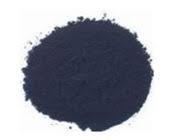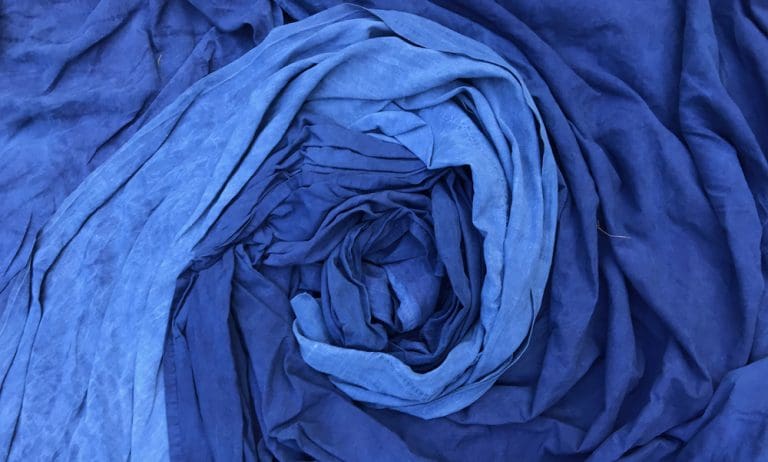
Did you know that natural indigo dye comes from a plant? In this blog, we look at the steps to take the plant from harvest through to the magical indigo blue colour.
INDIGO KLEF TRADISIES
Klere wat met natuurlike indigo gekleur is, het so 'n ryk en uiteenlopende geskiedenis. Dit is moontlik om hierdie ryk blou kleure te vind in enigiets van die samoerai-beskermende onderklere, Afrika-indigo-geverfde tekstiele tot ketelpakke en selfs die alomteenwoordige denim. Dit is selfs in 'n Egiptiese farao se graf gevind! Deesdae word die meeste klere gekleur met sintetiese indigo-kleurstowwe, wat die eerste keer voor die Eerste Wêreldoorlog in Duitsland ontdek is.
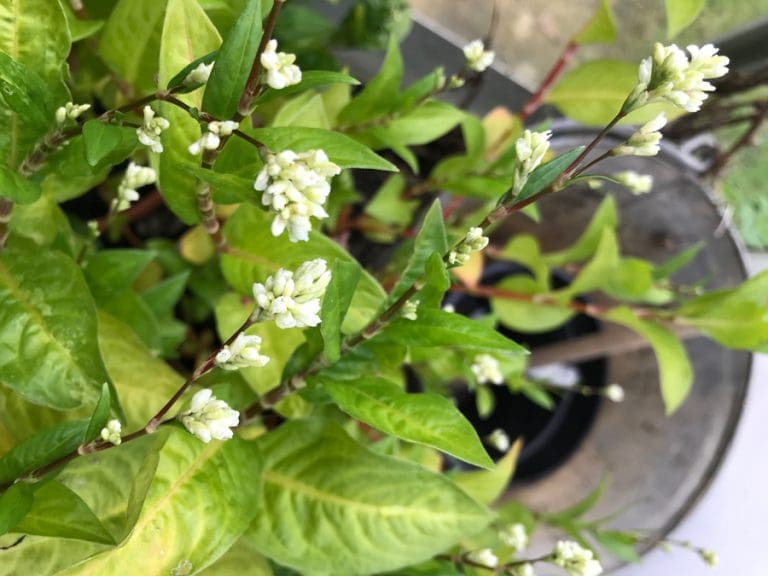
HET JY GEWEET DAT INDIGO KLEUR VAN 'N PLANT KOM?
Natuurlike indigo comes from a plant, the indigofera which is grown in sub-tropical climates. It is possible to grow it here in the UK but not on a commercial level, woad is more suited to this climate.
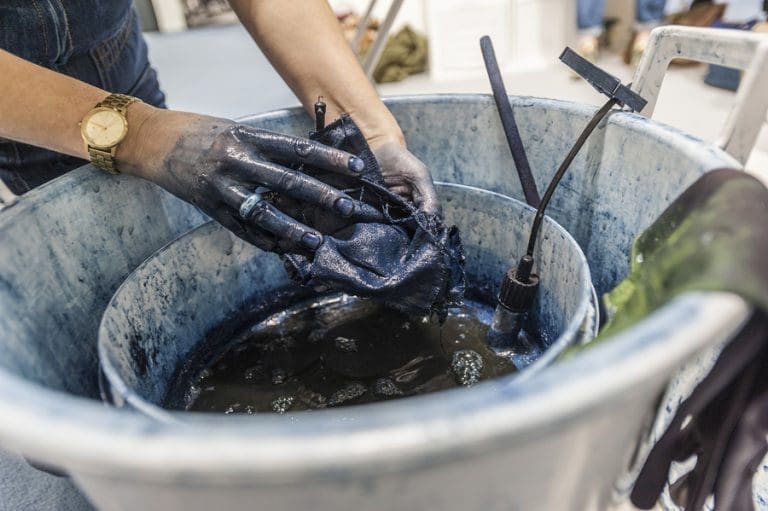
Ek het selfs my eie Japannees indigo plant that I grew at my home. It looks a bit like a basil plant and is also an annual with a long growing season. This makes it hard to cultivate in the UK and Europe. Be wary of planting in the ground as the type of indigo that grows well in the UK is a relation of Japanese knotweed, so it can spread, but frosts will kill it so don’t panic.
Broom indigo; Vat broom-indigo; CIVat blou 5;
Indiese Indigo is lief vir son en word meer natuurlik gevind in lande soos Indië, Bangladesj en sommige Sentraal- en Suid-Amerikaanse lande. It has smaller leaves compared to the Japanese indigo, and has beautiful fuchsia like flowers. Indigo dye is extracted from the leaves of the plant. In all species the best time to harvest the leaves for dye is just before it starts to flower and at first light.
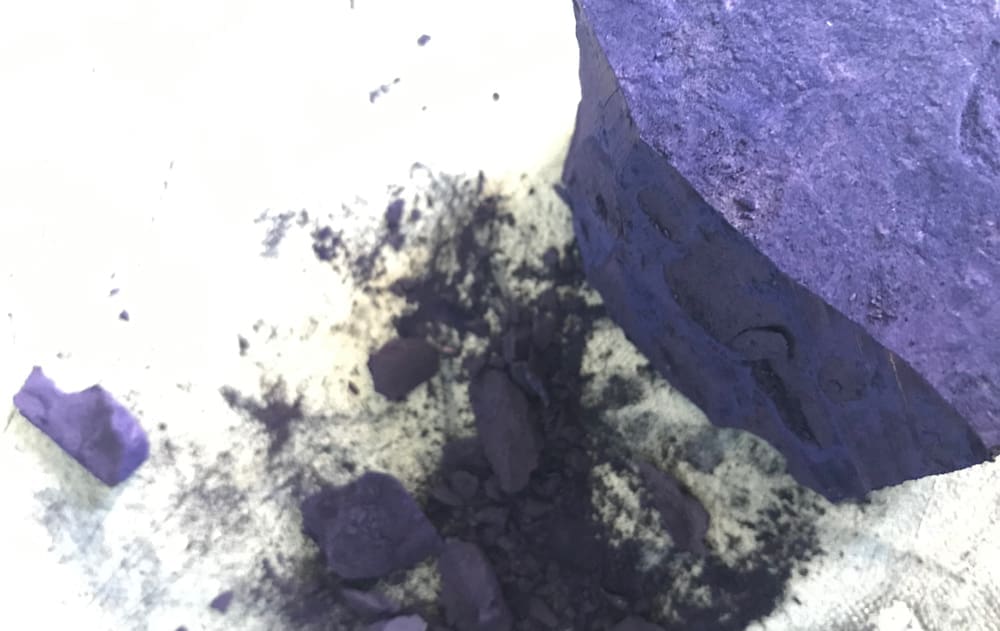
BENADERINGE OM INDIGO-KLEURSTOF IN VERSKILLENDE STREKE TE SKEP
Wes-Afrika
At the ancient Kofar Mata Dye Pit in Nigeria, they harvest the indigo plants, then create balls of leaves, flowers and stems. Next, they make them into a pulp and leave them to dry in the sun. Roughly 100kg of indigo is needed for one pit. The artisans then dye the fabric using tie-resist or stitches to make the traditional resist patterns.
Indië
Alhoewel natuurlike kleurstof 'n herlewing in gewildheid sien, moet ons steeds bewus wees dat dit nogal 'n arbeidsintensiewe proses is om van indigo-plant deur te neem na 'n kleurstof wat gereed is om te gebruik en hoë vlakke van vaardigheid en kennis vereis, in baie gevalle opgedoen oor verskillende generasies van familie.
It starts with harvesting the plant and finishes up as an indigo “cake” or block. Historically, this was called blue gold because it was high value, compact and lasted well for exporting on the spice road.
Plants are usually harvested after 90 days and taken to the local “Neel Kuthi” or indigo extraction centre. The leaves are put into large tanks and left to soak in water until the water turns green. That water or dye is then filtered into a second tank where a sediment starts to from. The sediment is then released into a smaller pot.
Enige oorblywende water kan gebruik word om plaaslike velde nat te lei sonder dat skadelike neweprodukte of chemikalieë by die proses betrokke is.
The sediment is boiled for 1-2 hours in a copper pot to reduce. It’s then filtered again and cut into cakes. The cakes are left to dry in the shade. Once they are dry, they then can be sold in cake form or as a powder.
Die Japannese have another method of indigo dye exaction, known as sukumo and is an extremely complex process that has gone on for centuries. It is another variation of indigo extraction that I will go into in another blog post.
Interessante feit: Did you know that you can keep a vat of indigo dye ready for dyeing fabrics going for many years by looking after it? Some artisans describe it like looking after a small child that needs to be fed and rested and cared for in order for it to thrive!
Interestingly, the cloth that comes out of the vats after it has been dyed is a leaf green, but quickly turns blue with oxidisation. A light or dark colour can be created by dipping the fabric multiple times to layer the colour. Clothes dyed with natural indigo get more beautiful with time, reflected by people who pay extra to buy denim jeans that have already been “aged” or the denim heads who buy Japanese indigo woven on old American looms. These denim lovers don’t wash their jeans but instead allow them to age naturally with wear personal to each wearer. They wash gently in cold water and sometimes use white vinegar as a gentle cleaner.
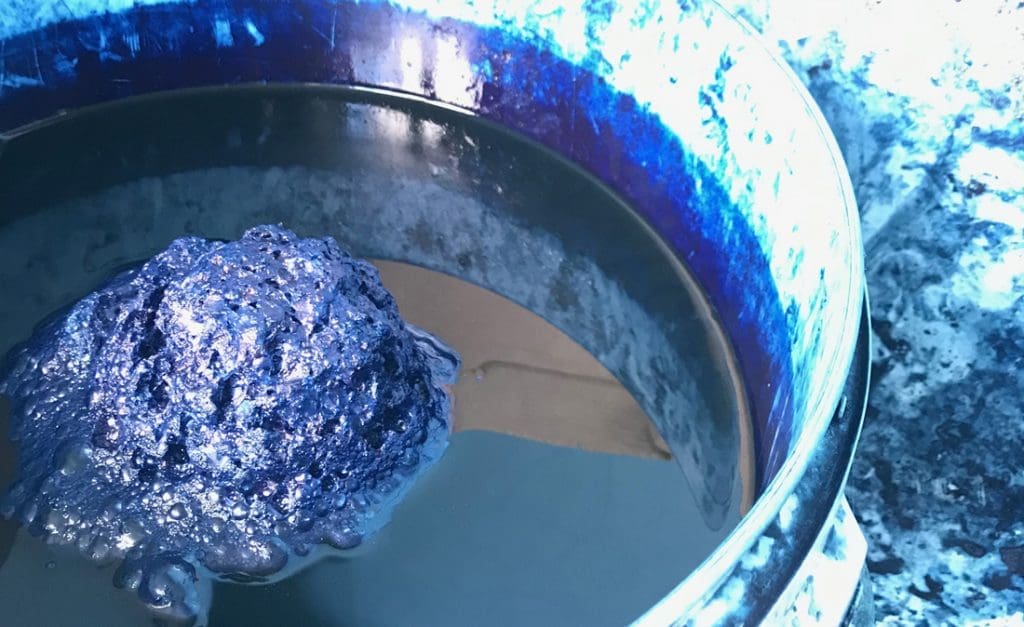
NATUURLIKE INDIGO: 'N VOLHOUBARE ALTERNATIEF VIR CHEMIESE KLEURstowwe
One of the things that makes natural indigo dye sustainable is that after the indigo pigment is extracted, water can safely be put back on the crops. Also, no toxic waste is produced.
Natuurlike indigo word dikwels in klein landelike gemeenskappe geproduseer waar die oorsprong maklik opgespoor kan word en die ambagsmanne billik vir hul handel betaal kan word, wat lei tot 'n sterker plaaslike ekonomie in landelike streke. Een so organisasie is Lewende Blou.
Now that indigo plants are grown in a more sustainable way, they are no longer seen as plants that render the land infertile. Instead they are grown in areas in-between crops.
There is no way that natural indigo dye could be created in enough quantities to support the global demand for indigo dye so the alternative that those who have an interest in protecting natural indigo is to continue to support the growth of “sustainable” fashion or pieces that are high quality and last for years.


